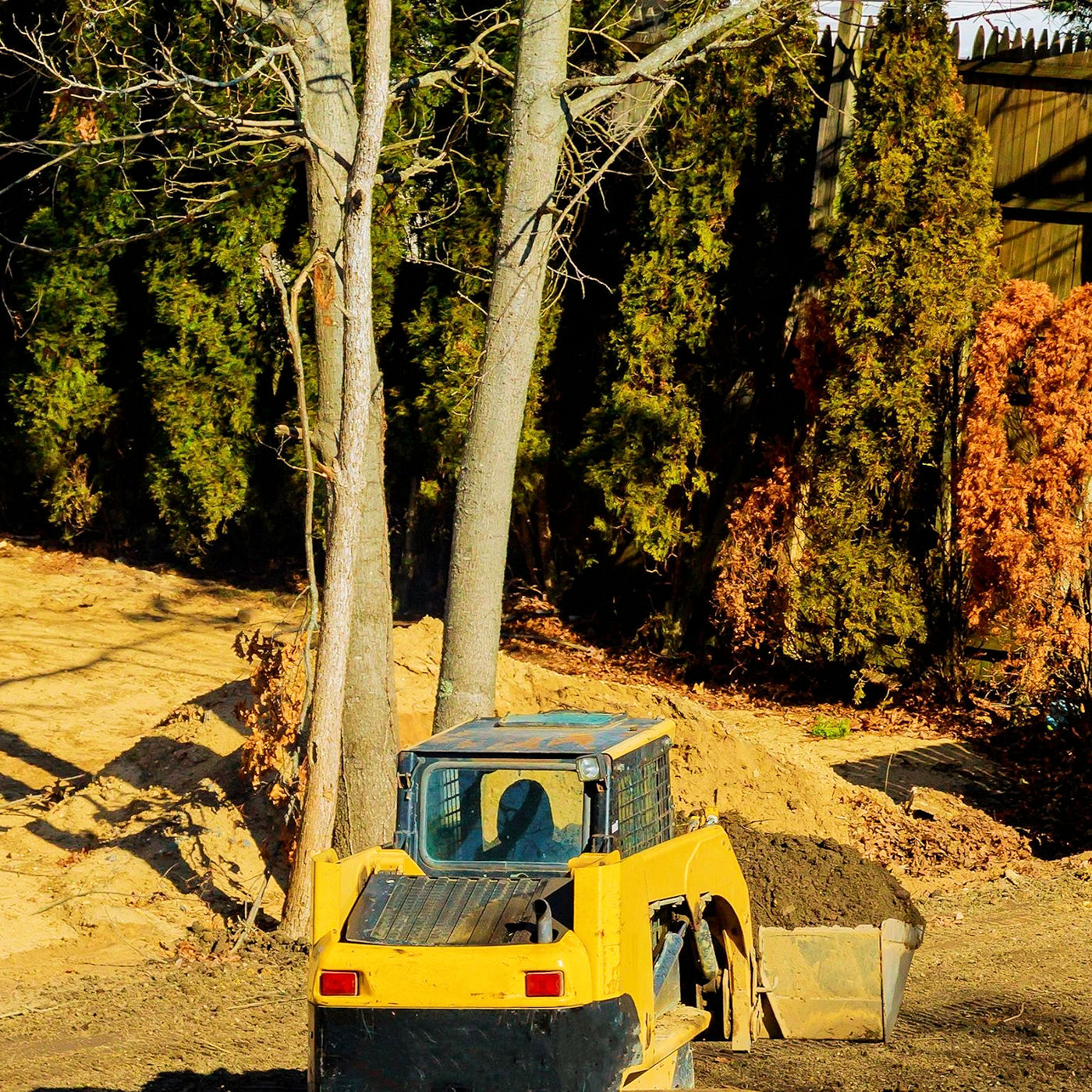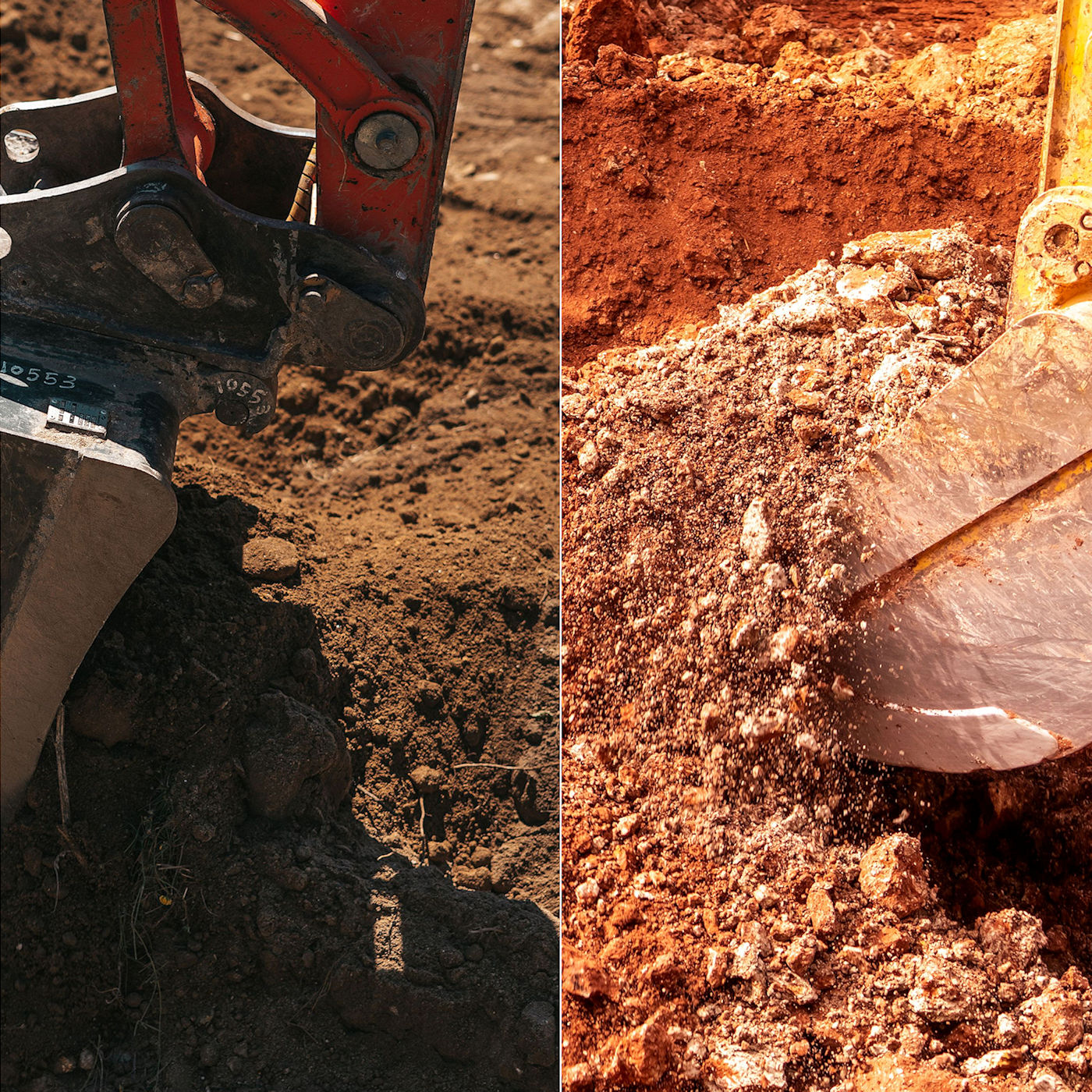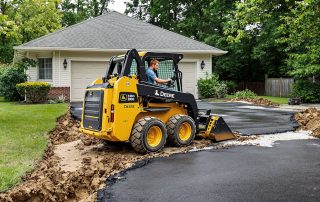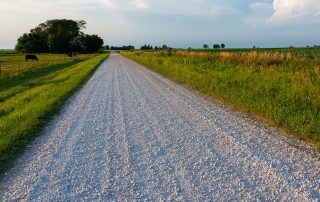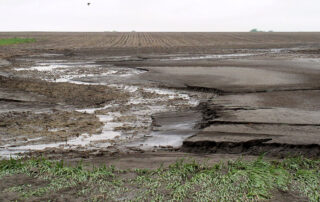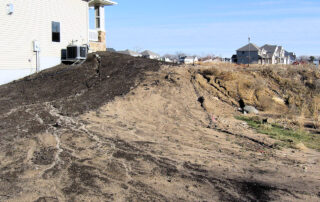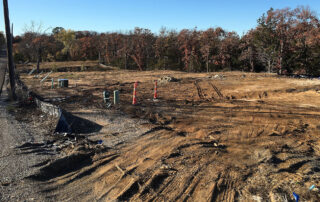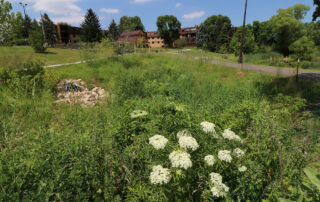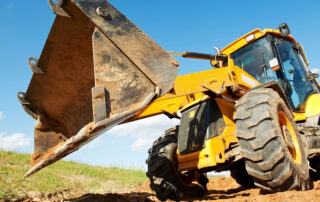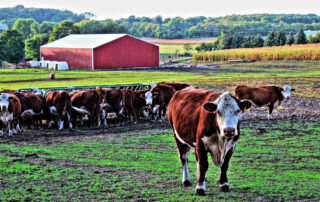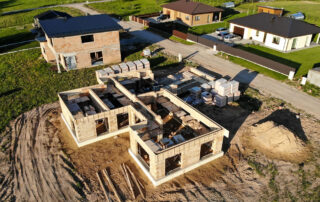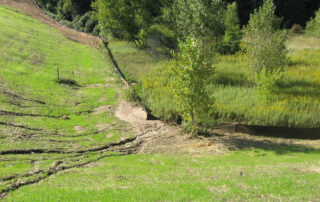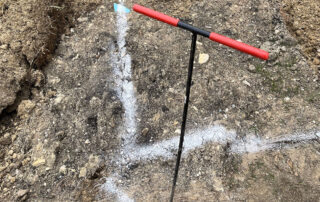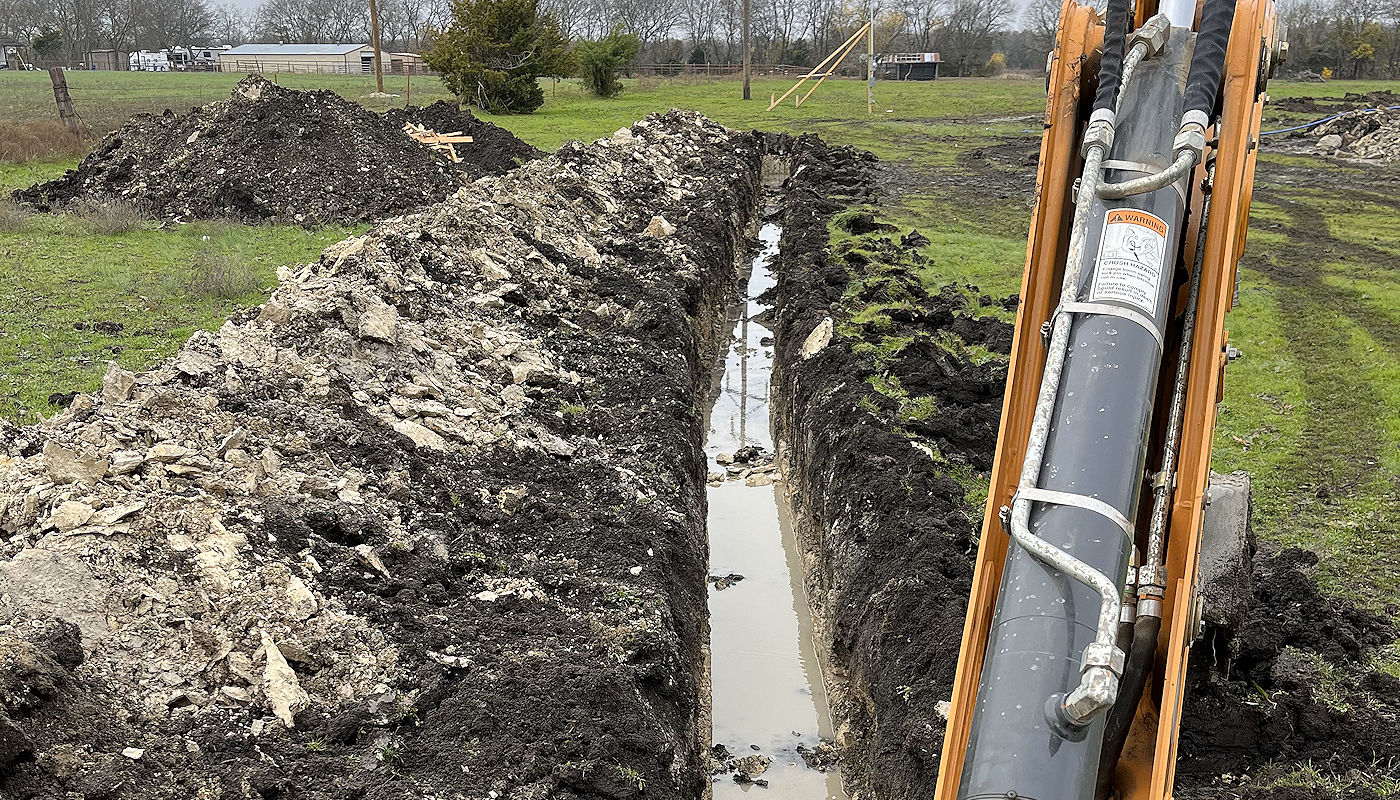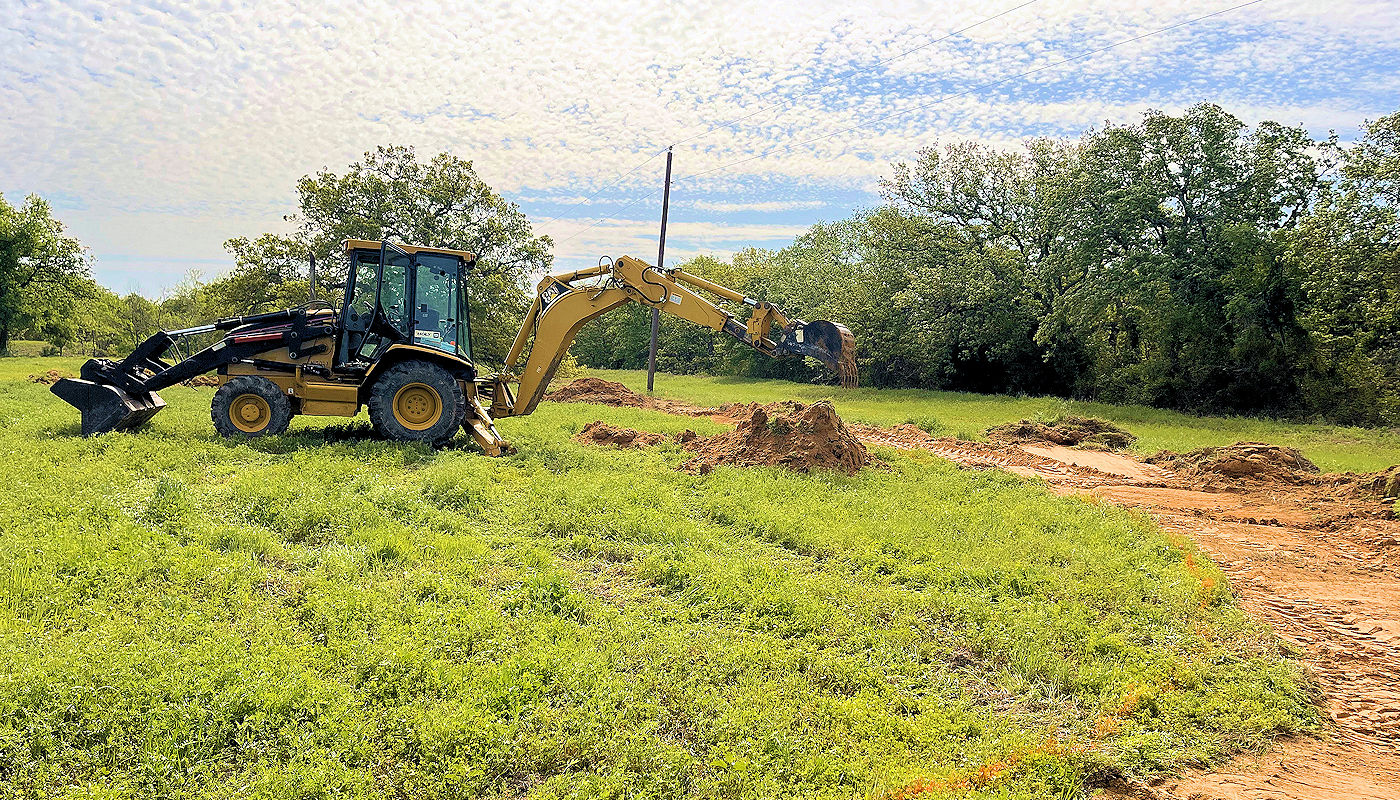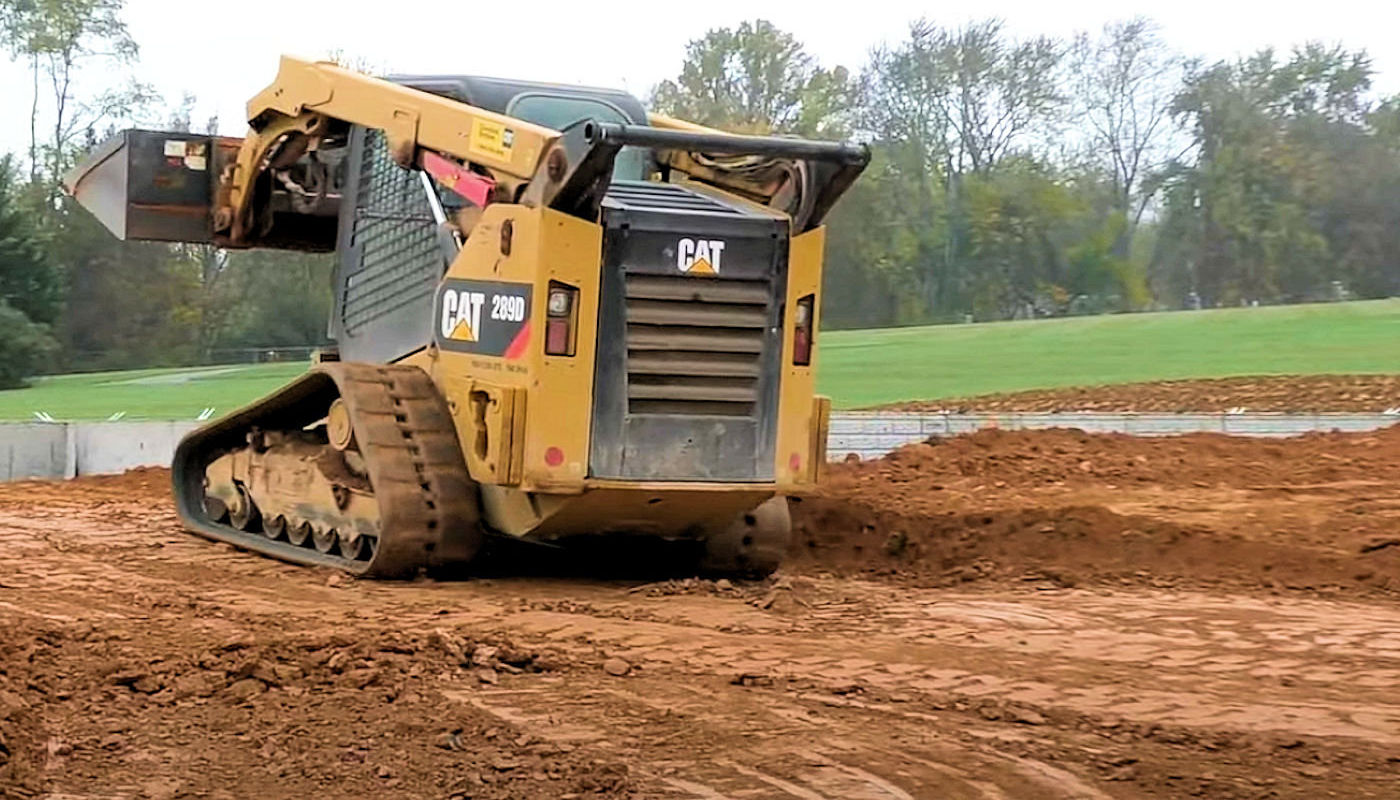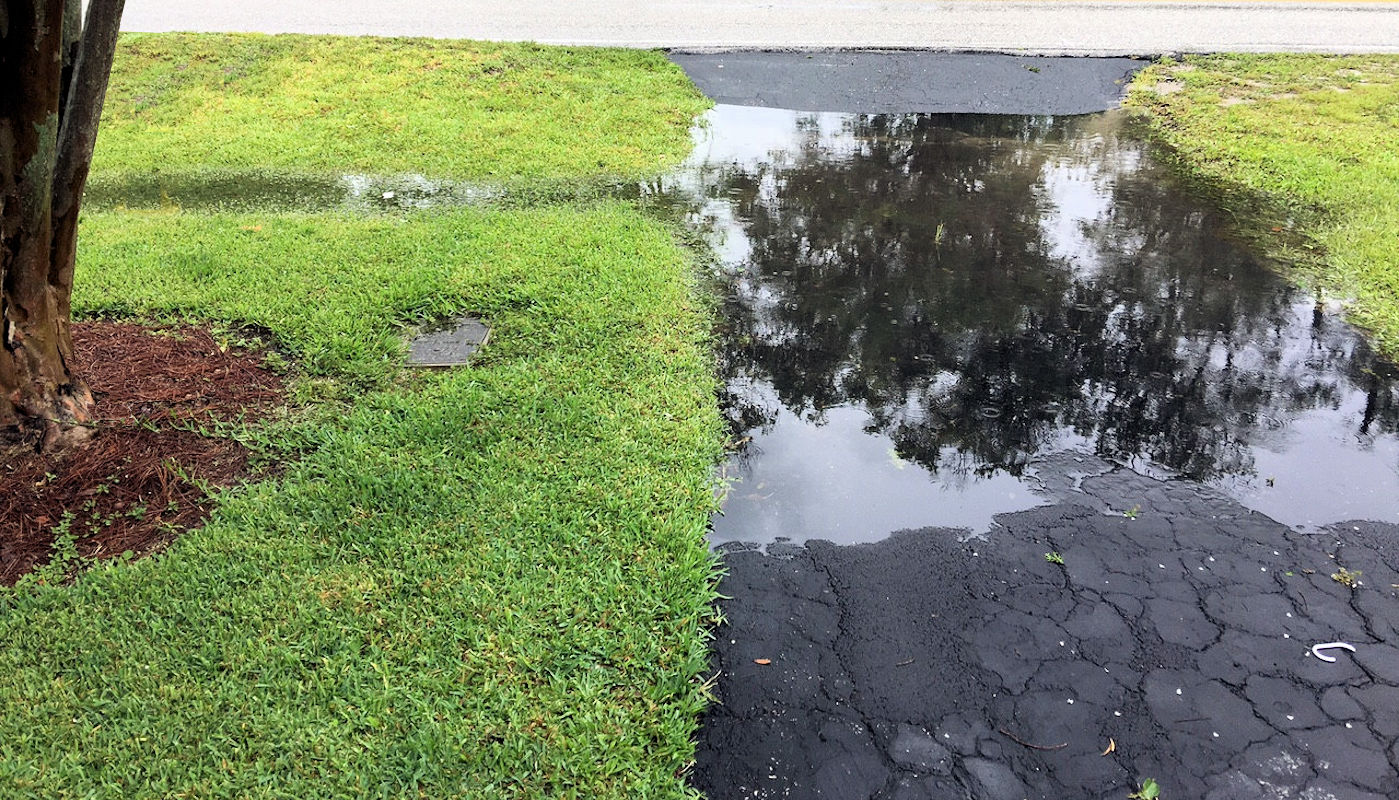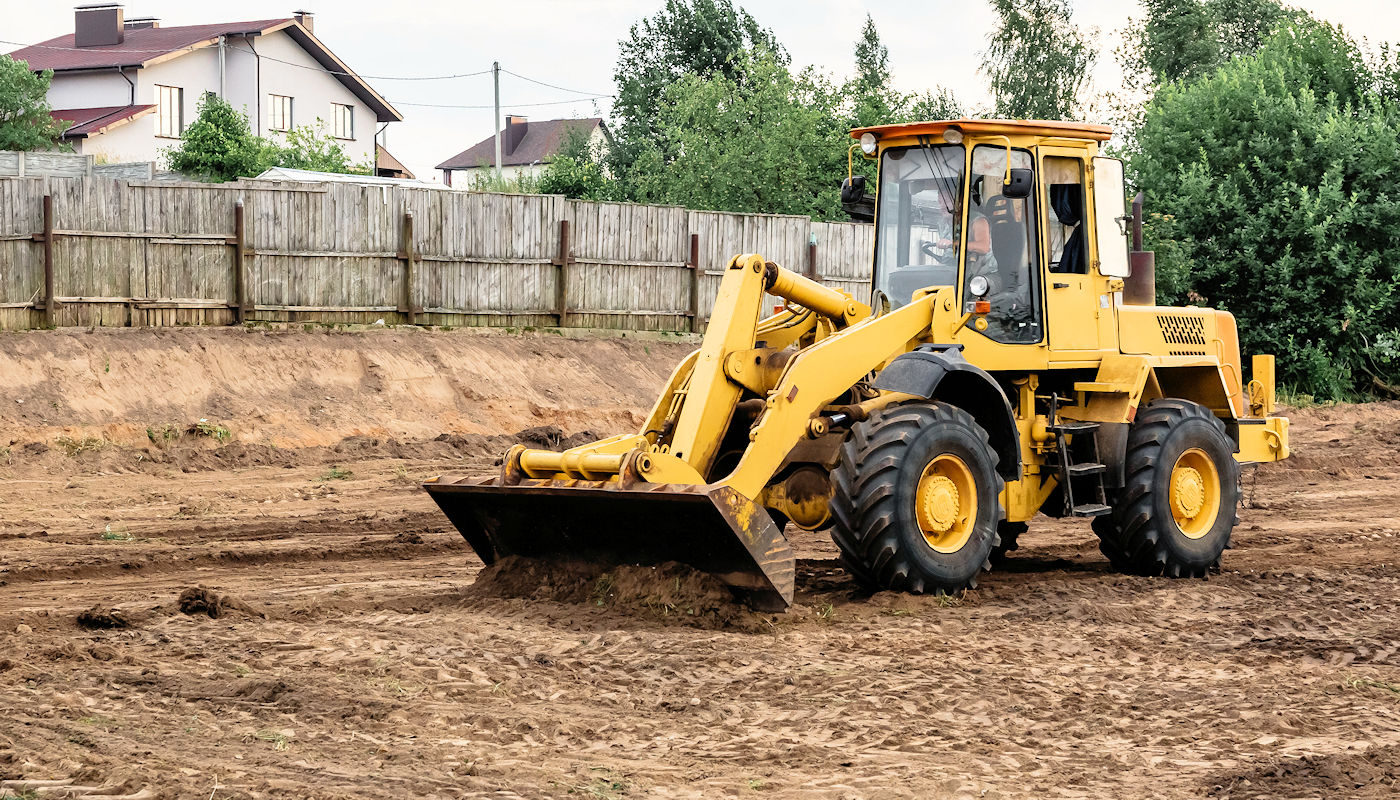

Landscape Grading & Excavating
Contractor Services
Landscape Grading & Drainage Services from Texoma Excavation & Construction
Landscape Grading & Excavating
Contractor Services
Landscape Grading & Drainage Services from Texoma Excavation & Construction
Texoma Excavation and Construction Company’s landscape grading and excavation services involve leveling or sloping the land around a property to improve its appearance, functionality, and drainage. Landscape grading can help prevent water damage, soil erosion, flooding, and other problems caused by poor drainage or uneven terrain. Landscape grading can also enhance the beauty and value of the property by creating a smooth and solid base for landscaping and hardscaping projects, such as planting, paving, or building.
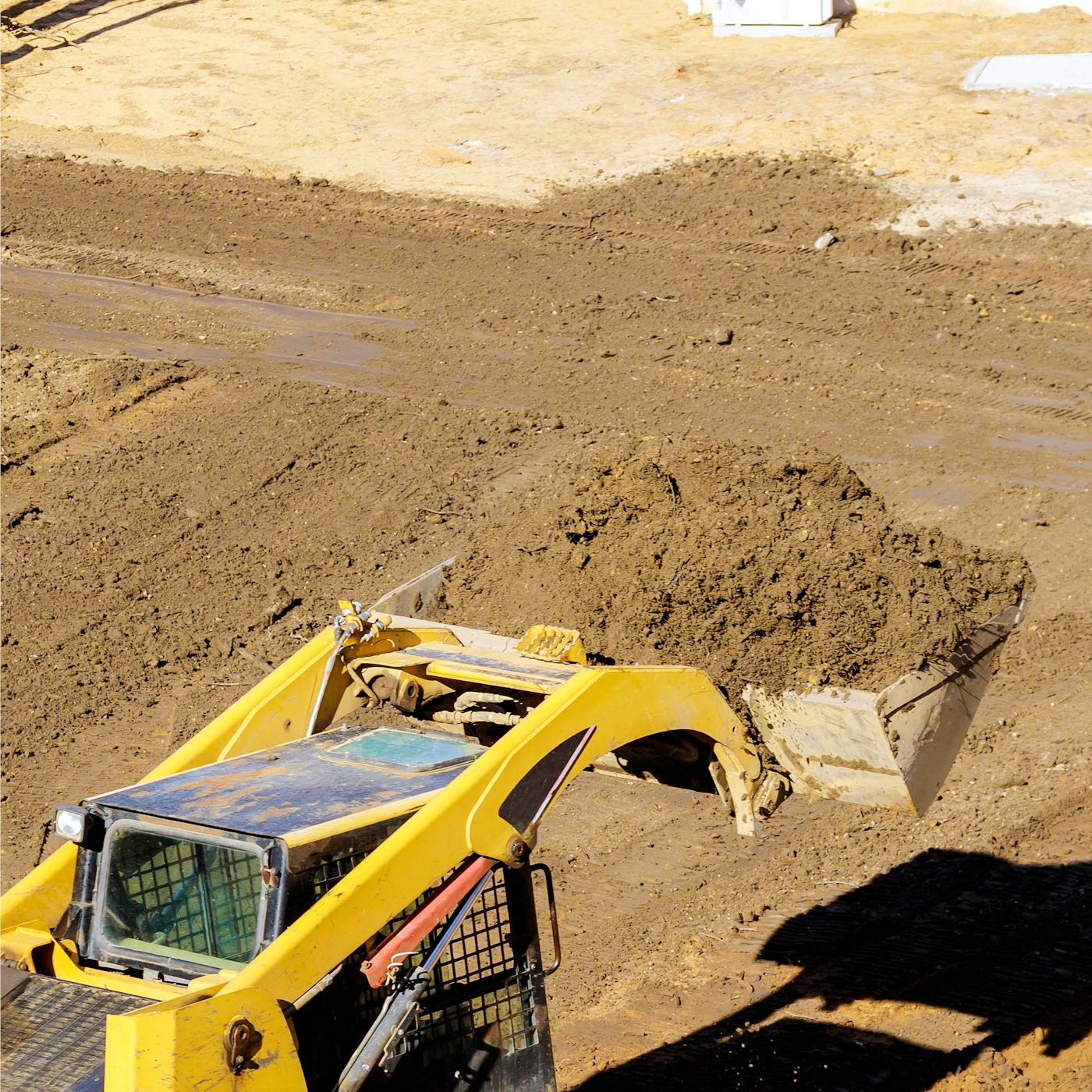
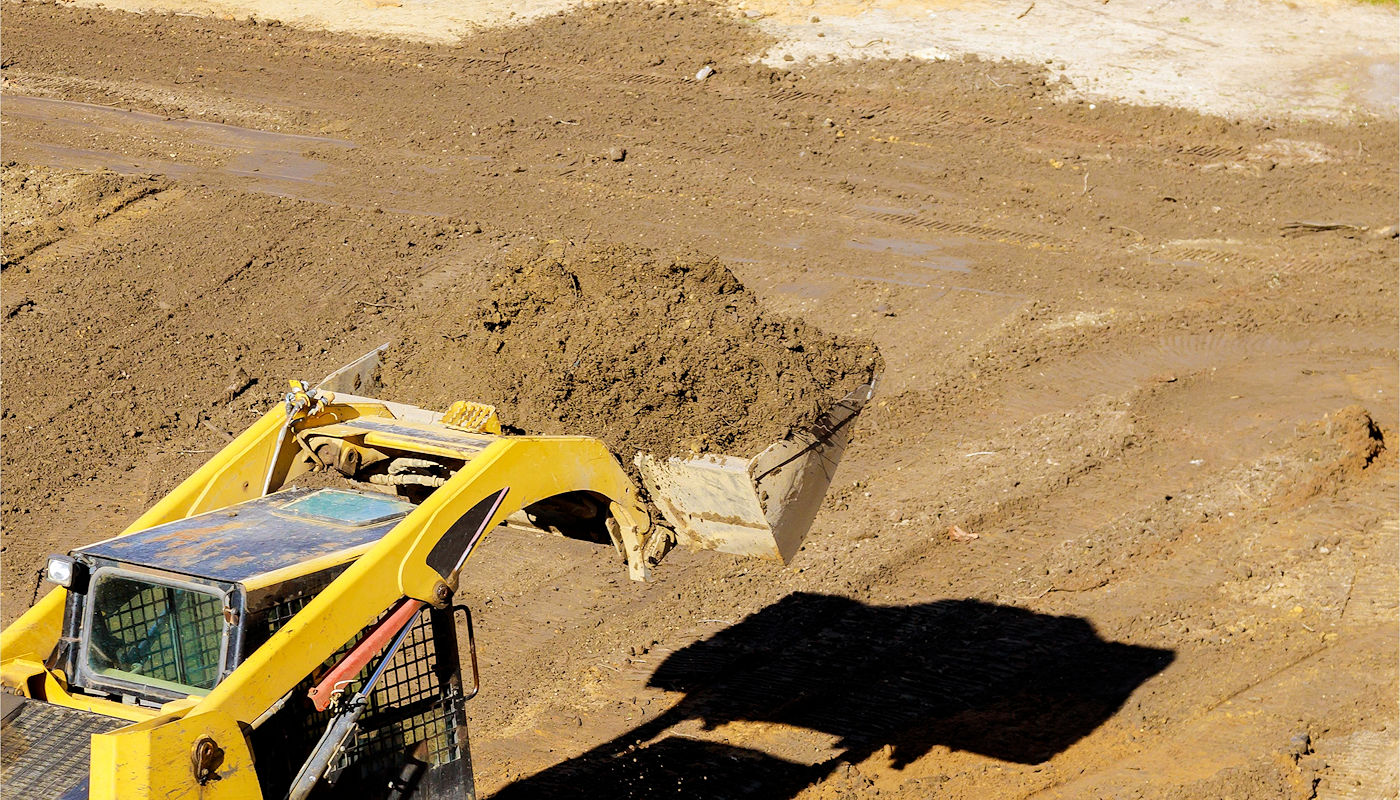
How can landscape grading improve drainage around the home and in the yard?
How can landscape grading improve drainage around the home and in the yard?
Landscape grading is one of the most common fixes for poor drainage. Sloping the grade away from the foundation of your house at a 1-inch slope per one foot of horizontal run is easy, inexpensive, and effective. Make sure that the top of the slope leaves a minimum of 4 inches between the slope and the bottom of the siding. Clay-type soil is less permeable, so water will wash down it, not through it [1].
Grading can improve drainage around the home and in the front and backyard by creating a gentle slope that directs water away from the foundation and other structures. This can prevent water from pooling, seeping, or freezing around the home, which can cause structural damage, mold growth, pest infestation, and health hazards. Grading can also improve the soil conditions and aeration for plants and grass, as well as prevent runoff and pollution from entering the waterways.
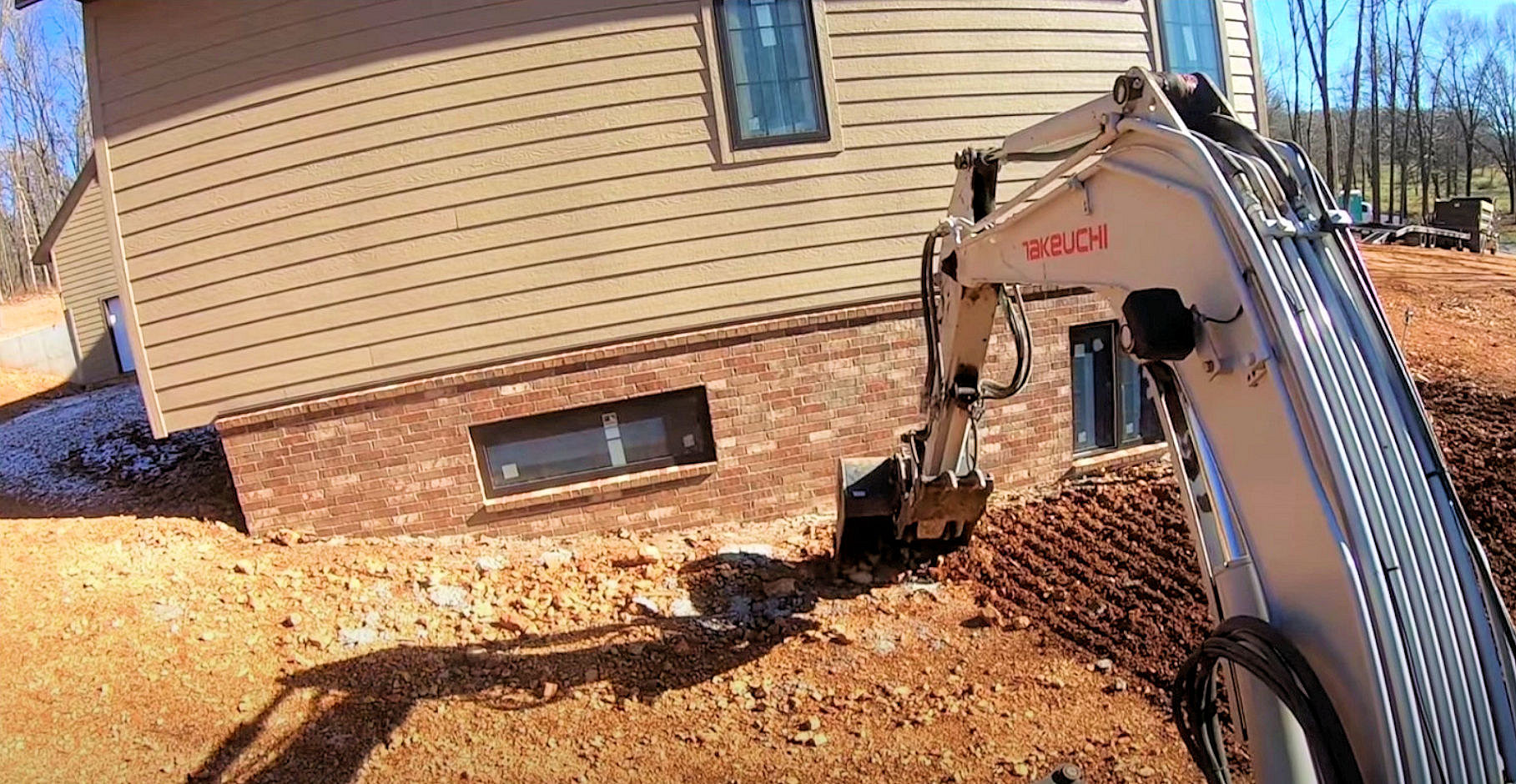
Changes Made to the Ground by Grading
Changes Made to the Ground by Grading
Grading reshapes the ground surface to planned elevations, which are determined by topographic survey and layout [10]. This process pushes the topsoil to form an even layer, filling in pits, holes, and bumps that can contribute to soil erosion during heavier stormwater runoff.
The cut face of earth excavation and fills should be no steeper than the safe angle of repose for the materials encountered and flat enough for proper maintenance. The permanently exposed faces of earth cuts and fills should be vegetated or otherwise protected from erosion [10]. Rainscaping methods such as French drains, rock trenches or ditches, bioswales, dry creek beds, etc. should be added to safely move the stormwater runoff to other rainscaping features for “processing” such as rain gardens, dry wells, dry ponds, etc. These rainscaping features allow the water to filter through the ground, reducing pollutants from the various hardscapes (roof, driveways, streets, etc.) before it enters storm sewers or waterways.

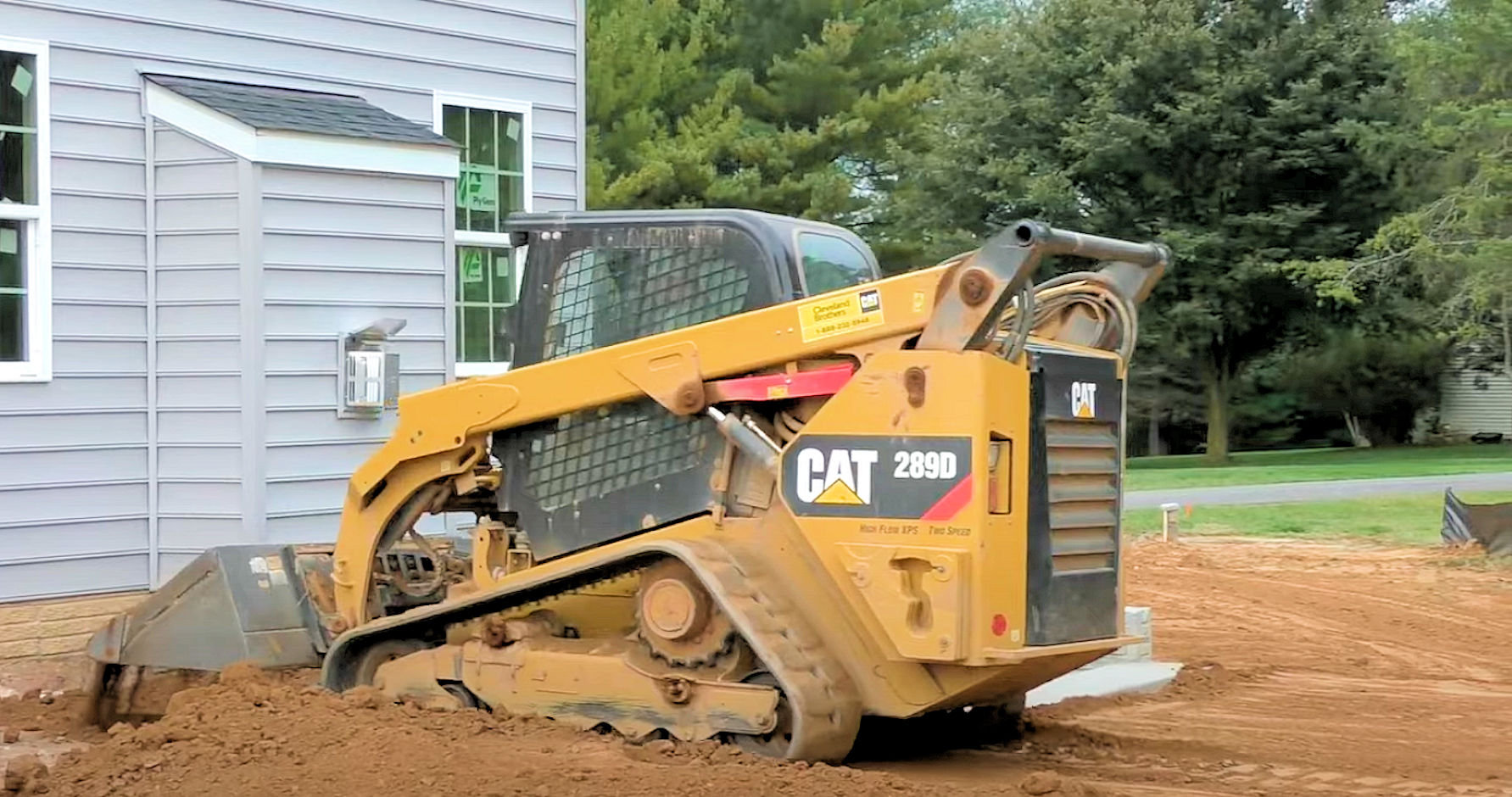
In essence, grading a yard creates a mild incline, correcting the slope of your yard so that rainwater and other precipitation (melting snow) flows away from building foundations. Ideally, the lawn around your house or business would have a slope of about 5%. That means that the surface of the ground 10 feet away from your house would be about 6 inches lower than the ground right next to your foundation. However, grades between 3% and 25% are usually considered acceptable [11].
By reshaping the ground in this way, land grading and added rainscaping features help to direct water away from the foundation (and any retaining walls), reducing the risk of soil erosion and subsequent damage.
Signs & Effects of Improper Land Grading
Improper land grading can lead to a variety of issues for both homes and businesses. Proper land grading is crucial for preventing water damage and maintaining the structural integrity of any property. If you notice any of the above signs indicated below, it may be time to correct the grading around your property.
Signs of Improper Land Grading
Here are some signs that the land grading around a property may need correction:

If water is pooling in certain areas of the property after a rain, especially near the foundation of the building, this could indicate a grading issue [5][6].
Foundation Cracks: Cracks in the foundation of a building can be a sign of improper grading. Water that doesn’t drain properly can exert pressure on the foundation, leading to cracks [5][6].
Basement Moisture: If there’s moisture in the basement, it could be due to improper grading. Water can seep into the basement if the ground around the foundation isn’t graded properly [5].
Soil Erosion: Signs of erosion, such as exposed roots or washed away soil, can indicate a grading problem [5].
Landscape Issues: If the landscape appears uneven or if plants are dying due to excess water, it could be a sign of poor grading [5].
Effects of Improper Land Grading
Improper grading can lead to serious issues for a property, including:
Interior Wall Damage: When water seeps into a building due to poor grading, it can lead to dampness and mold growth on interior walls [5].
Flooded Basements: Basements are particularly susceptible to flooding issues due to improper grading. Water that doesn’t drain away from the foundation can end up in the basement [5].
Foundation Issues: As mentioned earlier, water that pools around the foundation can cause cracks and other damage. In severe cases, it can even lead to foundation settlement or movement [6].
Landscape Damage: Poor grading can lead to erosion, which can damage landscaping. It can wash away soil and kill plants.

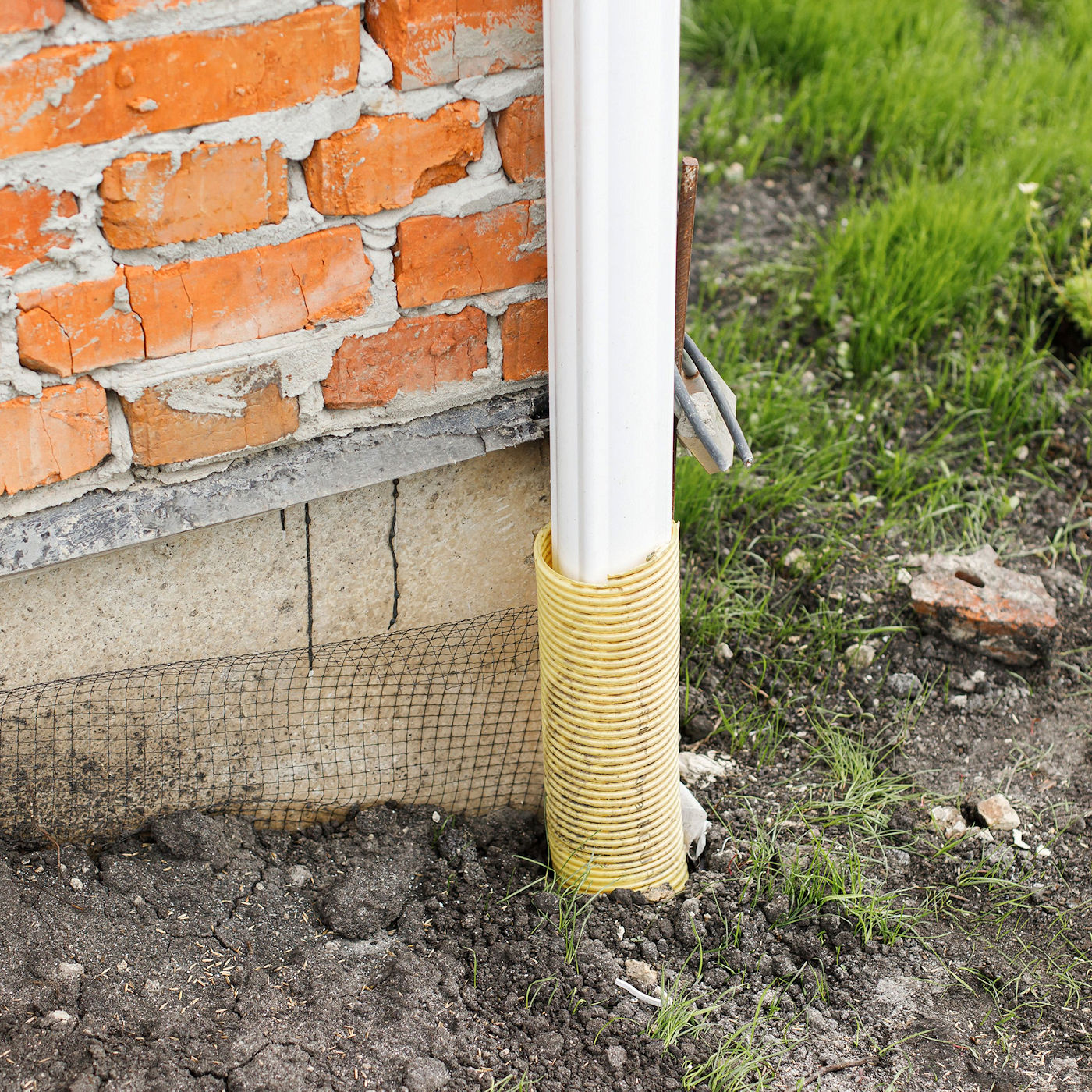
Water Accumulation: If water is pooling in certain areas of the property after a rain, especially near the foundation of the building, this could indicate a grading issue [5][6].
Foundation Cracks: Cracks in the foundation of a building can be a sign of improper grading. Water that doesn’t drain properly can exert pressure on the foundation, leading to cracks [5][6].
Basement Moisture: If there’s moisture in the basement, it could be due to improper grading. Water can seep into the basement if the ground around the foundation isn’t graded properly [5].
Soil Erosion: Signs of erosion, such as exposed roots or washed away soil, can indicate a grading problem [5].
Landscape Issues: If the landscape appears uneven or if plants are dying due to excess water, it could be a sign of poor grading [5].
Effects of Improper Land Grading
Improper grading can lead to serious issues for a property, including:
Interior Wall Damage: When water seeps into a building due to poor grading, it can lead to dampness and mold growth on interior walls [5].
Flooded Basements: Basements are particularly susceptible to flooding issues due to improper grading. Water that doesn’t drain away from the foundation can end up in the basement [5.
Foundation Issues: As mentioned earlier, water that pools around the foundation can cause cracks and other damage. In severe cases, it can even lead to foundation settlement or movement [6].
Landscape Damage: Poor grading can lead to erosion, which can damage landscaping. It can wash away soil and kill plants [5].
What to Look for Around Buildings and Retaining Walls
When inspecting the grounds around buildings and retaining walls, look for the following:
Water Accumulation: Check for areas where water tends to accumulate. This is especially important around the foundation and near retaining walls [8][9].
Cracks in Walls: Look for cracks in the walls of the building or in retaining walls. These can be signs of water pressure due to poor grading [8][9].
Soil Erosion: Check for signs of soil erosion, such as exposed roots or gullies. These can indicate that water is not being properly directed away from the building or retaining wall [8][9].
Drainage Issues: If there are gutters or drains, check to see if they are clear and functioning properly. Blocked or ineffective drainage systems can contribute to grading issues [8][9].
Slope of the Ground: The ground should slope away from the building or retaining wall. If it slopes towards the structure, this could indicate a grading problem [7].
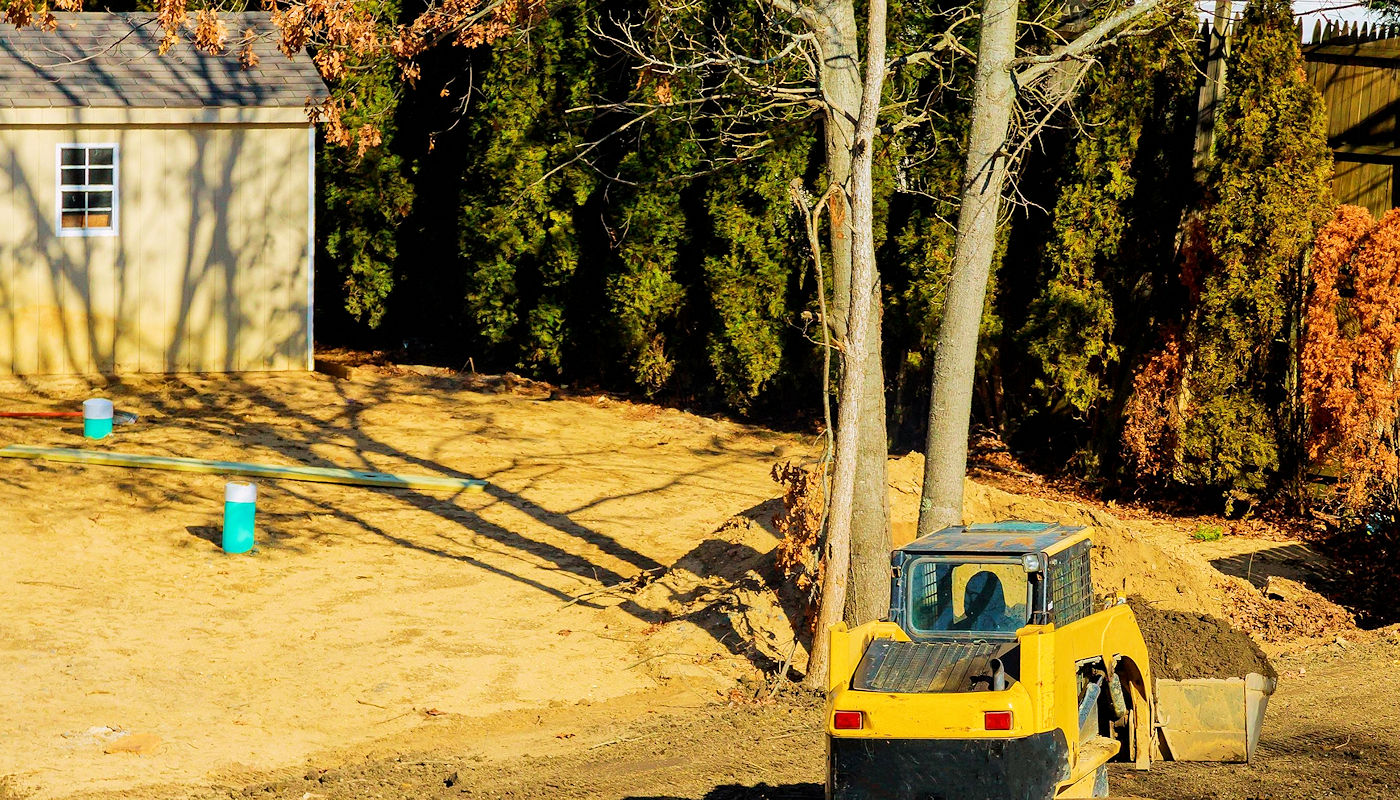
Does soil type have anything to do with the grading work that is done to improve drainage?
Does soil type have anything to do with the grading work that is done to improve drainage?
Soil type has a lot to do with the grading work that is done, as different types of soil have different properties and behaviors when it comes to water absorption, retention, and movement. Soil types are classified by their texture, or the proportion of sand, silt, and clay particles in them.
The best soil for grading around the house is a mix of silt and clay, as it is impermeable enough to divert water easily, but also has enough gaps to hold against the structures. Sandy or very high clay content soil should be avoided, as they can either allow water to seep through or hold water against the foundation. Gravel, mulch, and other porous materials should also be avoided, as they can act as filters or sieves and let water pass through to the soil below. To improve the grading and drainage of the soil, it is recommended to add organic matter, such as compost or manure, and cover it with a layer of silt or clay soil[1][2][3][4].
